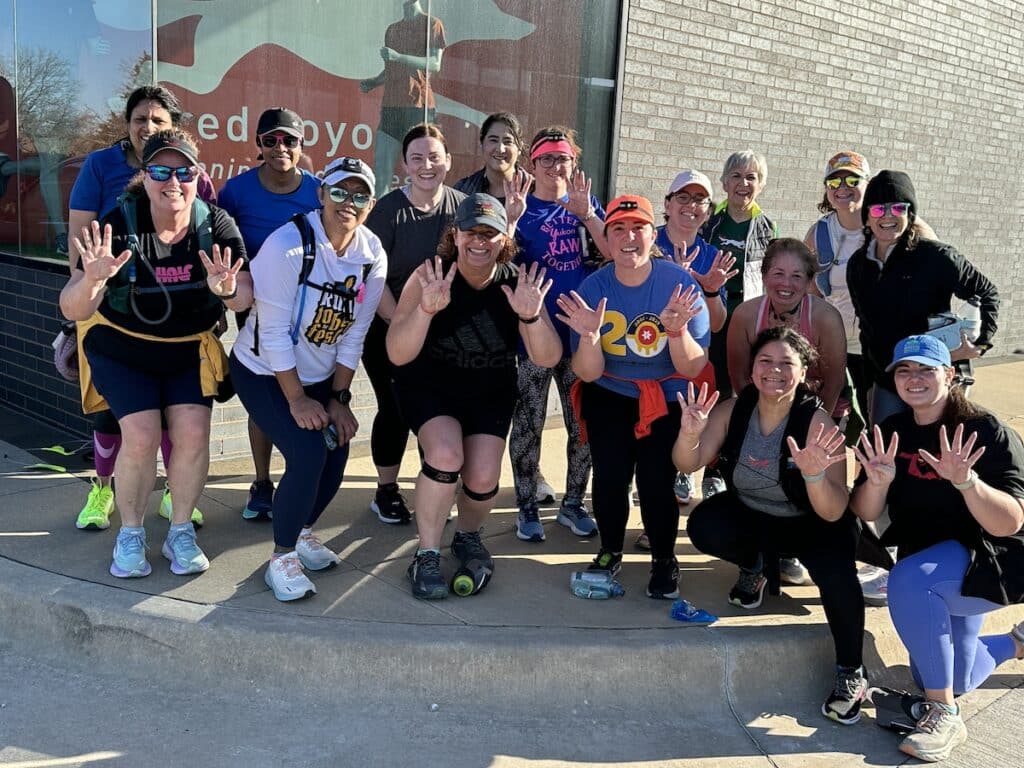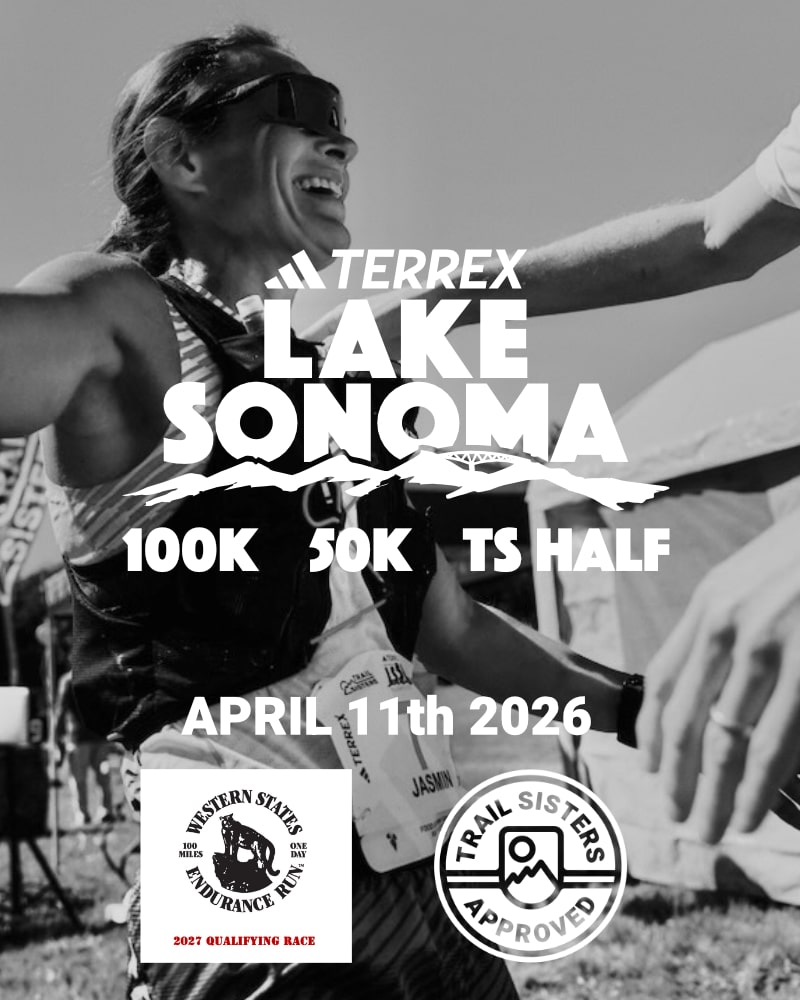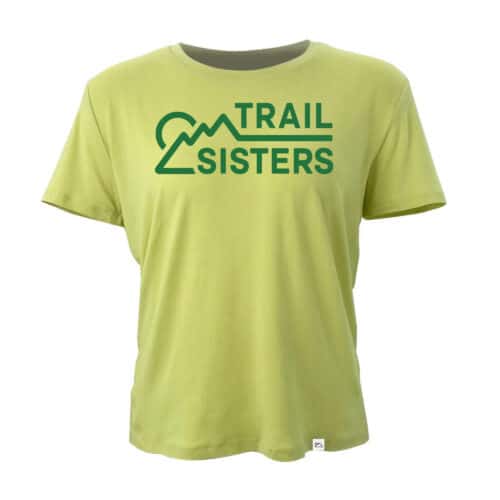Main Menu
Running in the Dark with Seasonal Depression

Kim has been a runner for more than 40 years. The trails own her heart. A lover of all things outdoors, she recently moved to Little Rock, Arkansas, “to be somewhere beautiful”. Kim is a writer and a teacher/instructor. She loves dogs and cats almost as much as she loves running trails. She has two daughters she hopes to be more like as she grows up.
Share This Article!


By: Kim Watkins
October through December are filled with falling leaves, crisp air and trails covered in damp leaves and thick air; running in the fall is a renewal for me, hope. But I know what lies ahead on the trail for me.
November I’m still running on the energy of new winter gear, beanies, and new running shoes. The damp smell of earth and campfires in December is crackling with chances for snow covered trails. I love running in the woods in December. But I can’t shake the change in my mood and the feeling of isolation and darker gloomier days when I may not be able to get out on the trail. For me, the deep snowfalls and biting cold would be wonderful trail running weather. But for some, our trails get more mud and sleet making the trek to winter solstice a bit more icey. The winter solstice means I might make it. A bit exaggerated but with December 21 comes a hint of more light with each day. I mentally mark off the days until the end of February. With less light comes profound mental and emotional transformation for many. Starting June 20 it’s in the back of my mind that less and less light is coming and there’s nothing I can do about it except hold on until December 21 with the promise of longer light, and run.
According to Psychiatry.org 5% of the US population struggles with Seasonal Affective Disorder(SAD) 40% of the year and is most common in women. What does seasonal depression look like to you? To me, it’s a mood that hits me after the holidays. Women are 4 times more likely to suffer from SAD.
On December 21, the earth tilts furthest away from the sun meaning less light for those of us in the Northern Hemisphere. The Winter Solstice marks the shortest day of the year. From June 21 until December 21 the light dims and days become horribly depressing for some. SAD has been identified as a disorder of mood based on the seasons and the amount of light from dawn until dusk.
Even though from December 21 through February we are seeing longer daylight hours inch by inch, it is a slogging battle through mental and emotional muck and mud. Though in many different forms for those of us who suffer, seasonal depression for me means, run. I run from the suffocating plastic bag over my head. I run from the sleepy unmotivated lethargy pulsing through my veins like pancake syrup. I run from the hopelessness that the biting cold will never end because it’s surviving on the smell of honeysuckle and colorful flower beds which will never return.
I have always just “dealt” with the feeling of being trapped under a blanket that’s tied down with bricks. Running away from the starkness of February is no simple task. The warm blanket of despair and hopelessness is wrapped in negative self talk and withdrawal and isolation. I know I shouldn’t crawl under the blanket but it’s so dark and cold outside I convince myself it’s ok for a few days until I get to feeling better, feeling more like myself. But it’s more difficult to pull myself out from under the SAD blanket than it would have been to have just gone out for a run when I first felt the heaviness and weariness of January.

Nadine Forest, 4th overall in the North Texas Ultra 100k, said, “sometimes the hardest part is getting motivated to get out and move, but I have never regretted going out for a run.”
Like most female trail runners Nadine knows the effects of depression. From hormones to environment most women can’t outrun bouts with consistency. “I can’t recommend running enough for helping keep depression at bay. I also have ADHD, so a lot of things that tend to work for others such as meditating, drawing, and journaling has never worked for me personally. I just can’t sit still!”
The mother of two adds, “The uplift in mood and increased concentration from the dopamine release from running is always worth it.”
Sal, female half marathoner said, “I would say I’ve battled depression for quite a few years. I have really been able to regulate it and running is a huge part of that over the past couple of years. I have no problem with medications, I just wanted to try other remedies before I went that route.”
She also confirms a common denominator for many of us, but is lacking in so many runners’ lives; “I would like to add that a run community is a huge part of battling depression with running. It’s one thing to get out there and run but when you can do it with others it motivates you and inspires you to do better.”
John Hopkins Medicine online states that SAD usually starts during adulthood. The risk of SAD increases with age. It’s rare in people under age 20 and as we’ve learned women are affected more often than men. John Hopkins Medicine at at hopkinsmedicine.org suggests less sunlight and shorter days are thought to be linked to a chemical change in the brain and may be part of the cause of SAD.
Melatonin, a sleep-related hormone, also has been linked to SAD. The body naturally makes more melatonin when it’s dark. So, when the days are shorter and darker, more melatonin is made.
There are alternatives such as light therapy, spending time outside even on cold days, and medications.
According to an article from Triathlete that was published in Outside Magazine(triathlete.com), “SAD is linked to a biochemical imbalance in the brain prompted by winter’s shorter, darker days. Researchers have found that as seasons change, a lack of natural sunlight can cause an imbalance of serotonin, a brain chemical that affects your mood. Some bodies also make too much melatonin, a hormone that regulates sleep, and not enough vitamin D, leading to symptoms of SAD.” This article reminds us it’s the light not the exercise.
Any form of depression has shown to be lessened with exercise, but as important as running and other exercises are to depression, being outside packs a more effective dosage against seasonal affective disorder.
For me, running alleviates my battles in my head, even the battles I can’t always identify. But for me it’s the combination of being outside and running. Running on a treadmill helps me with seasonal affective disorder but so does sitting outside on my front porch. The magic dynamic duo for me is running outside. It doesn’t even need to be sunny, though the vitamin D definitely amps up our ability to absorb other nutrients. I find that when I combine outside with running I am almost unstoppable. It doesn’t last though. I have to read minister the elixir of sun and run daily or at least every other day.

About the Author

Kim has been a runner for more than 40 years. The trails own her heart. A lover of all things outdoors, she recently moved to Little Rock, Arkansas, “to be somewhere beautiful”. Kim is a writer and a teacher/instructor. She loves dogs and cats almost as much as she loves running trails. She has two daughters she hopes to be more like as she grows up.
Share This Article!











